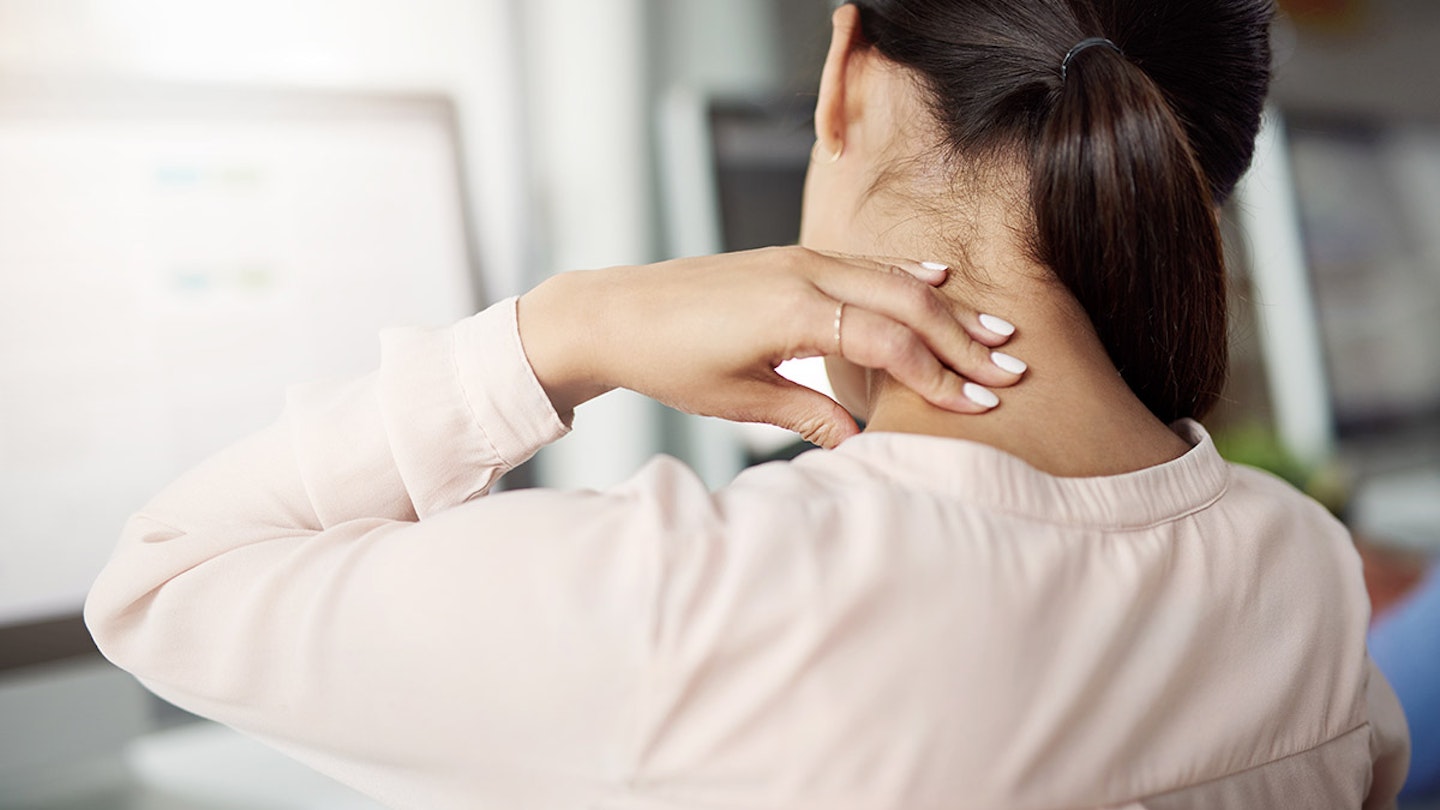Forward head posture (FHP) is where your head leans forwards out of a neutral alignment with your spine. It’s often associated with rounded shoulders (kyphosis) and can lead to neck stiffness and other issues.
If you have forward head posture, there are exercises you can do to help. Keep on reading for everything you need to know about FHP, from what causes it, to the symptoms to look out for and how to treat it.
What causes forward head posture?
Forward head posture is often caused by hunching or leaning over for a long period of time, such as your mobile phone or while sitting at a computer. However, there are many other everyday activities where we’re in this position which can also lead to it, including:
• Reading in bed
• Sleeping with your head raised
• Weak muscles in your upper back
• If you suffered from an injury, like whiplash
• Carrying a heavy backpack
• Sewing
• Driving with a hunched back
• Bone degeneration and arthritis
Forward head posture symptoms

Forward head posture can affect your upper back, neck and shoulder muscles which support your head, as when your posture is not aligned correctly, extra pressure is put onto these muscle groups.
The most common side effects of this include neck pain and stiffness, as well as shoulder pain, but there are lots of symptoms of forward head posture, such as:
• Headaches
• Limited range of motion in the neck
• Struggling to balance
• Respiratory issues
• Chronic fatigue
• Kyphosis (excessive rounding of the shoulders)
How to fix forward head posture
Exercises
Forward head posture exercises can help relax tight muscles and stiff joints. These particular exercises are very simple and can be easily done from the comfort of your home.
Chin tuck
These help to strengthen and stretch your neck muscles and can either be done sitting or standing.
Keeping your head straight and your chin parallel to the floor, lower your chin to your chest, as if you’re bowing your head. Hold for a few seconds, then return to your starting position and repeat.
Lying down chin tuck
Lie down on the floor with a small rolled towel placed underneath your neck and repeat the same steps as the chin tucks above.
Chest stretch
Standing with your feet shoulder width apart, lower your shoulders and the front part of your body down towards the floor. Lock your hands behind your back with your palms facing upwards as you do this. Make sure there is no arch in your lower back while doing this and that your back is nice and straight. Return to standing position and repeat.
Prevention
If you work at a desk for long periods of time, make sure you’re consciously trying to maintain good posture by:
• Relaxing your arms at right angle to your desk
• Keep your lumbar spine supported
• Leave a small gap between the backs of your knees and seat
• Position your hips slightly above your knees
• Having your screen at eye level
• Taking regular breaks throughout the day
• Feet are flat on the floor
You may also consider buying a posture correctorto support your neck and back, a back support for your office chair, or a pillow for your bed that specifically for neck pain.
Treatment
If your neck pain is causing you everyday problems contact your doctor. They may suggest physical therapy or prescribe you a course of prescription medication if the pain is severe.
